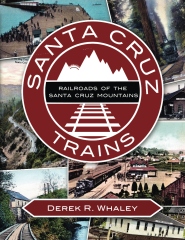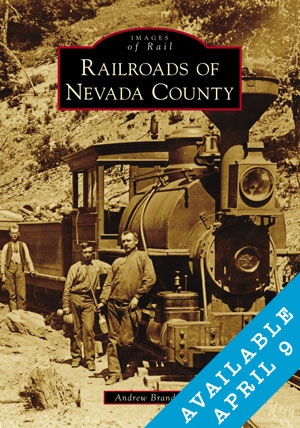

Reference Data.
Corporate Ownership.Los Angeles Municipal Cement Mill
1906 - 1921
U.S. Potash
July 1921 - February 1922
Monolith Portland Cement Co.
February 1922 - 1986
Calaveras Cement Co.
1986 to 1995
Lehigh Cement
1995 -
Lehigh Southwest Cement
Present
Rail Weight.
35 lb initially
60 lb at end of operations
Track Length.
At end of operations:
Mainline – 3 miles
Quarry – 1 mile
The Los Angeles Municipal Cement Mill.
By Randy Hees.T he City of Los Angeles approved a bond for the construction a municipal aqueduct system in 1905. To supply the concreted needed for the project a cement plant was constructed near Sullivan on the Southern Pacific's Tehachapi Line, 1 mi (2km) east of Summit station. Construction of the the Municipal Cement Plant of the City of Los Angeles and adjacent “company town” began in 1906. The plant was completed and began operation in 1908. At this time the station of Sullivan becoming Aqueduct and a depot was constructed, and later renamed Monolith in 1909. The name Monolith came from the limestone outcrops being mined, which were described as “being as large as monolithic boulders”.
At the time this cement plant was built, the cement industry was controlled by a trust, which tried to control the industry via patent holdings, dividing the country in to exclusive territories among the members, and maintaining prices at artificially high levels. The construction of a government owned cement plant, while not unique (a plant was built by the U. S. Reclamation Services to support the construction of the Roosevelt Dam in Arizona) was quite controversial, and many of the contemporary articles are filled with statements by industry experts claiming the cement produced here was more expensive than could be purchased on the open market, and was of lesser quality, while City reports include test data and discussions of costs per barrel produced, with and without depreciation on the physical plant. In retrospect, it appears that the plant saved the City a significant amount of money, less so in per barrel savings, but more so by creating a more competitive cement market.
Originally the limestone was quarried at “South Quarry” located directly south of the town of Tehachapi, south-west of the cement plant. The City of Los Angeles started construction of a 5 1/4 mile quarry railroad in the summer of 1908, completing it in December. This line passed under the Southern Pacific Railroad, then headed south-west from the plant, serving a bunker, which in turn was connected to the quarry by a 4,700’ long aerial tramway. The line was constructed with 35 lb rail on 21,000 redwood ties. It included a 5% grade near the bunker. It was initially operated with a single steam locomotive, but two additional engines were soon added.
In the spring of 1912 the they found that they had exhausted the supply of limestone at the original quarry, and a new quarry was opened three miles north west of the plant, on Cuddeback Ridge.1 The quarry railroad was torn up and re-laid to the new quarry. This new line initially paralleled the SP/ATSF line westward, then turned north-west climbing Cuddeback Ridge on a 6% grade. This would eventually become known as the “mainline” serving both the main quarry, but also clay fields and other minor limestone quarries via several branches. It appears that initially the main line directly served the quarries, ending on temporary track which would be shifted as needed, with the cars being directly loaded by steam shovels, later electric shovels. Eventually this evolved into two separate railroad systems, one in the quarry, hauling limestone to the crusher at the tipple, with the mainline hauling the now crushed lime to the plant.
The plant also used clay, initially mined near to the plant, and tufa, a volcanic rock that when crushed could be added to cement. In 1908 the railroad was extended a quarter mile to a near by tufa quarry2, and in later years the mainline was extended to serve a clay pit on the ridge near the main quarry.
The plant ceased operations in 1915, two years after the completion of the aqueduct in 1913. A few years later it was leased to Los Angeles County in a controversial transaction. In July 1921 the plant sold to the U.S. Potash Company, then the following year, transferred to the newly organized Monolith Portland Cement Company.3
2. Third Annual Report of the Bureau of the Los Angeles Aqueduct, 1908 p.48
3. Building and Engineering News, Feb 25, 1922.
Bibliography
Gary G Allen, "Narrow Gauge in the Tehachapis", Pacific News, November, 1974, No 157
February 1973 RAILROAD MODELER
Complete Report on Construction of the Owens Valley Aqueduct, City of Los Angeles, 1916
First Annual Report of the Bureau of the Los Angeles Aqueduct to the Board of Public Works 1907
Third Annual Report of the Bureau of the Los Angeles Aqueduct to the Board of Public Works, 1908
"The Municipal Cement Plant of the City of Los Angeles" Western Machinery and Steel World, Vol 8, p 47, Feb 1917
"Has the Los Angeles Cement Plant Been An Economic Success?" Architect and Engineer, Vol 57, 58, 1919p 119, 120,
"Monolith Cement Plant Now Controled by New Interests" Building and Engineering News, Feb 25, 1922
Reference Material Available Online:
Equipment Rosters.
Los Angeles Municipal Cement Mill / Monolith Portland Cement Roster by Randy Hees.
Photographs.
Los Angeles Dept of Water and Power photographs. Hosted by the Los Angeles Public Library.
Photographs of Monolith from Lee Williams at Williams' Cyber Niche. (www.drwilliams.org).
California \ Los Angeles Municipal Cement Mill.


